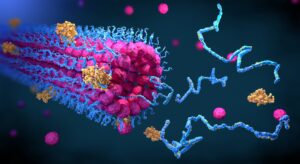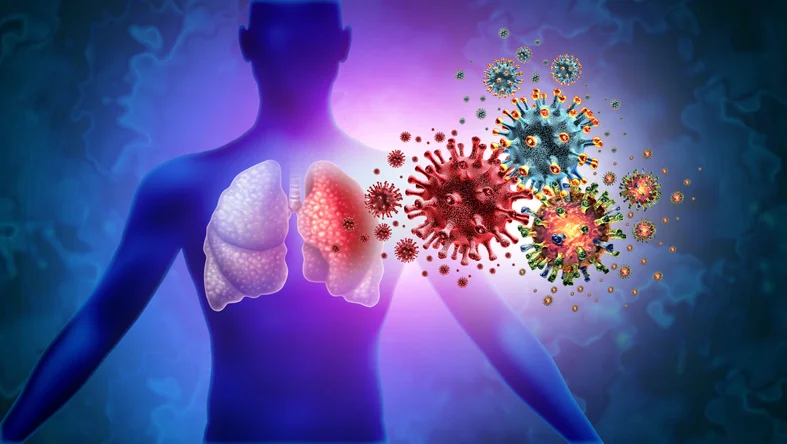Revealing the Hidden Depths of Lung Biology: A Paradigm Shift in Understanding
In the annals of medical science, the fluid-filled sac encasing the lungs has long been relegated to a role of passive protection, shielding the delicate pulmonary structures from external trauma. However, a groundbreaking revelation has emerged from the depths of research, illuminating a previously overlooked aspect of this seemingly mundane anatomical feature: it serves as a reservoir for formidable virus-eating cells known as macrophages, which spring into action during influenza infections, orchestrating a defense mechanism of remarkable potency and precision.

This paradigm-shifting discovery, spearheaded by Juliet Morrison, a distinguished virologist at UC Riverside, marks a watershed moment in our understanding of lung biology. Contrary to prevailing assumptions, the pleural cavity emerges not merely as a passive anatomical compartment but as a dynamic reservoir of immune cells, actively engaged in the frontline defense against viral pathogens. Through meticulous experimentation and groundbreaking insights gleaned from sophisticated data analytics, Morrison and her team have unraveled the intricacies of macrophage migration and function within the pulmonary microenvironment, shedding light on a hitherto unexplored dimension of host-pathogen interactions.
Unveiling Macrophages: Sentinels of Immunity
In the vast expanse of immunological discourse, macrophages emerge as formidable custodians of the body’s intricate defense apparatus. Juliet Morrison, a luminary in the field of virology at UC Riverside, assumes a pioneering role in unraveling the enigmatic migration patterns of these immune sentinels amidst the throes of influenza. Her research endeavors, characterized by a blend of meticulous experimentation and visionary insight, illuminate a hitherto unexplored chapter in the saga of host-pathogen interactions. Through the lens of Morrison’s groundbreaking work, macrophages transcend their conventional portrayal as mere scavengers, evolving into dynamic orchestrators of immune defense, orchestrating a symphony of cellular responses that intricately navigate the pulmonary microenvironment in the relentless pursuit of viral eradication.
At the heart of Morrison’s scientific odyssey lies a profound reevaluation of traditional paradigms governing immune surveillance and response. The revelation of macrophages’ clandestine infiltration into the pulmonary domain challenges entrenched dogmas, reshaping our understanding of the body’s innate capacity to combat infectious threats. As Morrison and her team delve deeper into the intricacies of macrophage biology, a rich tapestry of cellular dynamics unfolds, offering tantalizing glimpses into the resilience and adaptability of the immune system. This transformative insight not only expands the horizons of pulmonary immunology but also holds profound implications for therapeutic innovation, offering a beacon of hope in the ongoing battle against respiratory pathogens.
Pioneering Insights into Pulmonary Dynamics
Published in the prestigious Proceedings of the National Academy of Sciences, the research unveils a hitherto uncharted territory within the intricate landscape of lung biology. With meticulous precision, it delves into the mechanisms underlying the influx of macrophages into the lung milieu during viral onslaught, illuminating a cascade of cellular events that orchestrate the body’s defense against respiratory pathogens. This seminal work not only elucidates the role of macrophages in mitigating inflammation but also unveils their profound impact in curtailing disease progression, thereby underscoring the pivotal role of these immune stalwarts in safeguarding pulmonary health. As the scientific community grapples with the complexities of infectious disease, Morrison’s research stands as a testament to the power of interdisciplinary collaboration and relentless pursuit of knowledge in unraveling the mysteries of the immune system.
Redefining the Pleural Cavity: An Organ Within an Organ
Morrison’s research represents a transformative milestone in our understanding of pulmonary anatomy, transcending conventional perceptions of the pleural cavity as a mere anatomical structure. By delving into its functional significance in preventing lung collapse, her work not only illuminates the intricate mechanisms underlying respiratory physiology but also elevates the pleural cavity to the status of a distinct organ within the body. This paradigm shift challenges entrenched dogmas in pulmonary anatomy, prompting a reevaluation of its role in health and disease. As the scientific community grapples with the complexities of organogenesis and tissue homeostasis, Morrison’s research offers a compelling narrative that underscores the dynamic interplay between anatomical structures and physiological function, paving the way for novel insights into respiratory health and pathology.
Deciphering Data: From Information to Insight
The research journey embarked upon by Morrison and her esteemed team unfolds as a captivating saga that seamlessly traverses the realms of big data analytics and empirical validation. With an unwavering commitment to scientific inquiry, they navigate the intricate landscape of pulmonary immunology, armed with a potent blend of computational prowess and experimental rigor. Leveraging existing datasets derived from murine studies on lung-related genes, they harness the power of sophisticated algorithms to unravel the complex tapestry of cellular dynamics within the lung microenvironment. Through a meticulous analysis of vast repositories of genetic information, they discern subtle patterns and correlations, unveiling hidden insights into the orchestration of immune responses during respiratory infections.
This multidisciplinary approach not only unlocks the secrets encoded within the vast genomic landscape but also serves as a springboard for innovative experimentation. Armed with newfound knowledge, Morrison and her team embark on a quest for empirical validation, employing cutting-edge techniques to probe the intricacies of macrophage migration and function within the pulmonary milieu. Their collaborative efforts yield profound revelations, offering tantalizing glimpses into novel avenues of exploration and paving the way for transformative discoveries in the field of respiratory immunology. As they unravel the mysteries of lung biology, Morrison and her team stand as trailblazers at the forefront of scientific inquiry, charting a course towards a deeper understanding of the body’s innate defense mechanisms against respiratory pathogens.
Experimental Validation: Illuminating the Path Ahead
Armed with cutting-edge laser-based techniques, researchers meticulously track the migratory trajectory of macrophages, offering empirical validation of their pivotal role in combating influenza-induced lung pathology. By selectively modulating macrophage activity, they delineate the intricate interplay between host immune response and viral pathogenesis, laying the groundwork for future therapeutic interventions.
Harnessing Proteins for Therapeutic Endeavors
The quest to identify the molecular cues orchestrating macrophage migration into the lungs heralds a new era in therapeutic discovery. By elucidating the signaling pathways underpinning this phenomenon, researchers aim to devise targeted interventions that bolster macrophage-mediated immunity, offering a ray of hope in the quest for effective influenza therapeutics.

A Call to Arms Against Drug Resistance
In an era besieged by the specter of antimicrobial resistance, the imperative to develop alternative therapeutic strategies assumes paramount importance. Morrison’s advocacy for host-directed therapies underscores the pressing need to harness the body’s innate defense mechanisms as a bulwark against the relentless onslaught of drug-resistant pathogens.
Conclusion: Navigating the Frontiers of Biomedical Innovation
As the scientific community traverses the frontiers of biomedical innovation, Morrison’s pioneering research serves as a beacon of hope in the battle against infectious disease. By unraveling the hidden complexities of lung biology and harnessing the body’s innate defense mechanisms, her work not only enriches our understanding of host-pathogen interactions but also offers a glimmer of optimism in the perpetual struggle against microbial adversaries.
Related Topics:
- Unveiling the Climate Crisis: Understanding the Urgency and Complexity of Climate Change – Micro2media
- Biomanufacturing using chemically synthesized sugars enables sustainable supply of sugar without competing with food – Micro2media
- Scientists discover hidden army of lung flu fighters | ScienceDaily
- News and Features | News – Climate Change: Vital Signs of the Planet
